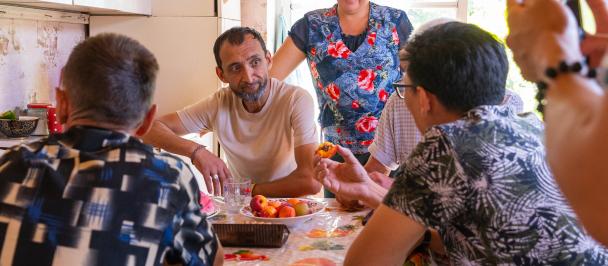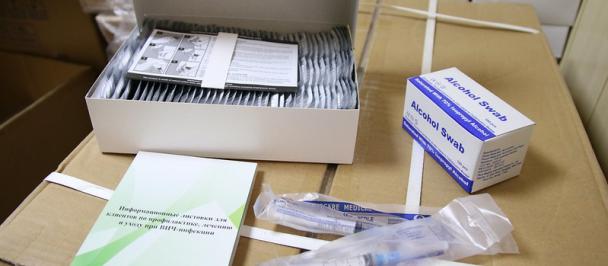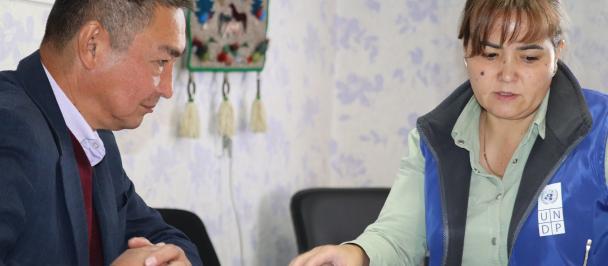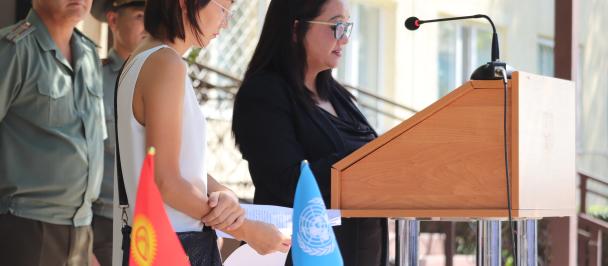Baktygul Almerekova, UNDP/ Global Fund TB specialist
Photo: Marion Biremon / UNDP Kyrgyzstan
UNDP TB specialist answers
Baktygul Almerekova, UNDP/ Global Fund TB specialist, tells us how to differentiate COVID-19 and TB, and why it’s important.
Why are less people getting diagnosed for tuberculosis (TB) during the COVID-19 pandemic?
In connection with the COVID-19 pandemic, wariness about tuberculosis should stay high. Less people are consulting doctors for TB symptoms because at the beginning, COVID-19 and TB can be quite similar. First symptoms include slight cough, slight fever, chills, weakness, malaise. These symptoms are common for COVID-19 and TB, which is why currently why people seeking medical help are diagnosed for COVID-19. Patients and medical workers forget about tuberculosis. We already have cases registered of patients receiving a negative result for the COVID-19 test but being treated consequently, for a respiratory viral disease. But when these patients’ medical condition worsens, doctors understand that they have tuberculosis.
What are the main symptoms of tuberculosis?
This is why it’s crucial to remember the main symptoms of TB: a dry cough for more than two weeks, accompanying weakness, fatigue, moderate fever, loss of appetite, and possibly loss of weight.
If you have these symptoms, even if they’re similar to COVID-19, you need to reach out for medical help and ask to be tested for both COVID-19 and tuberculosis, especially if you were in contact with someone suffering from TB.
What would you like to tell doctors?
I would like to make an appeal to health care workers working with COVID-19 – please don’t forget about tuberculosis. And upon questioning your patient, if you learn that he/she was in contact with a TB patient, please have him/her diagnosed in parallel for COVID-19 and TB.

 Locations
Locations



